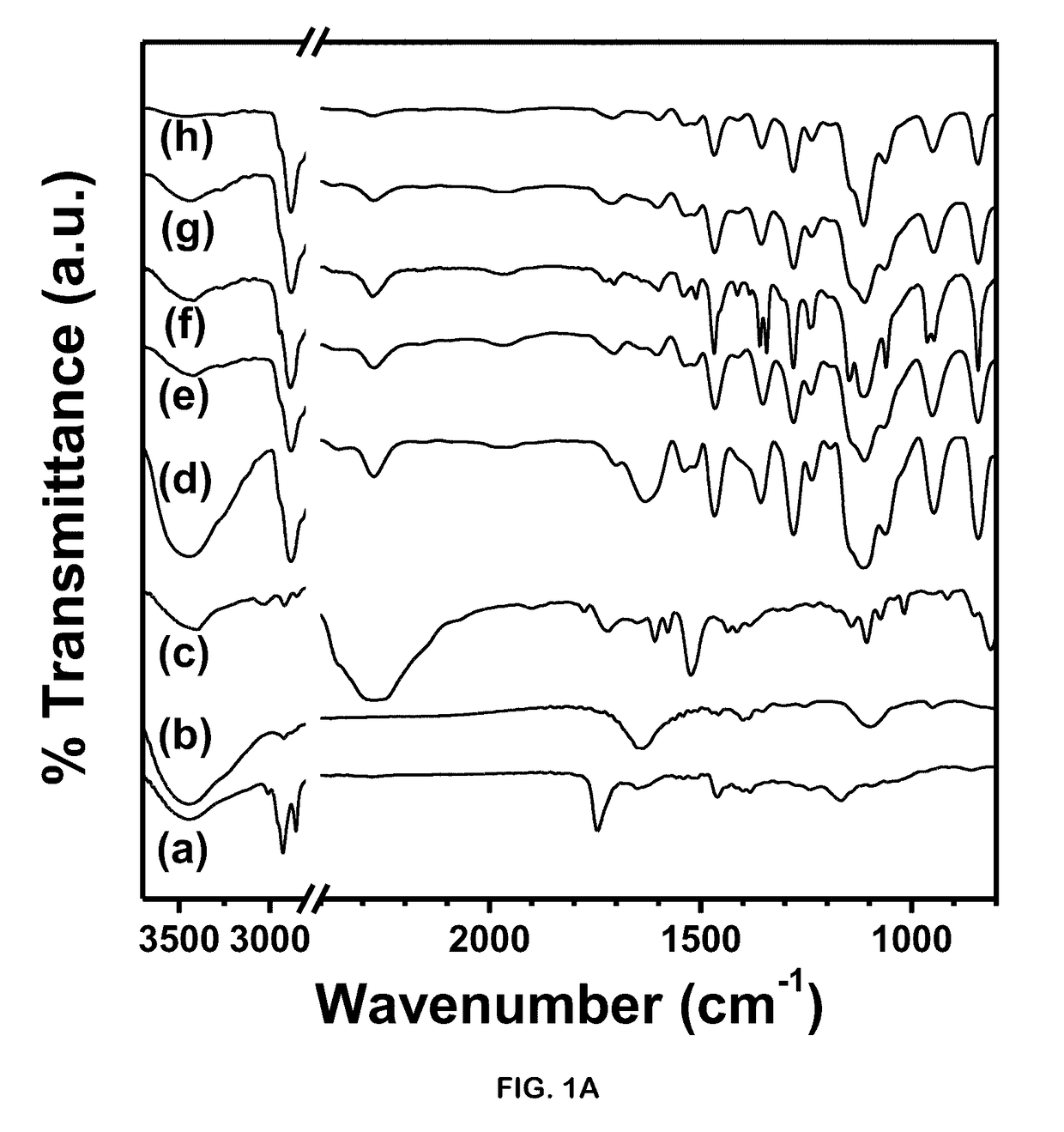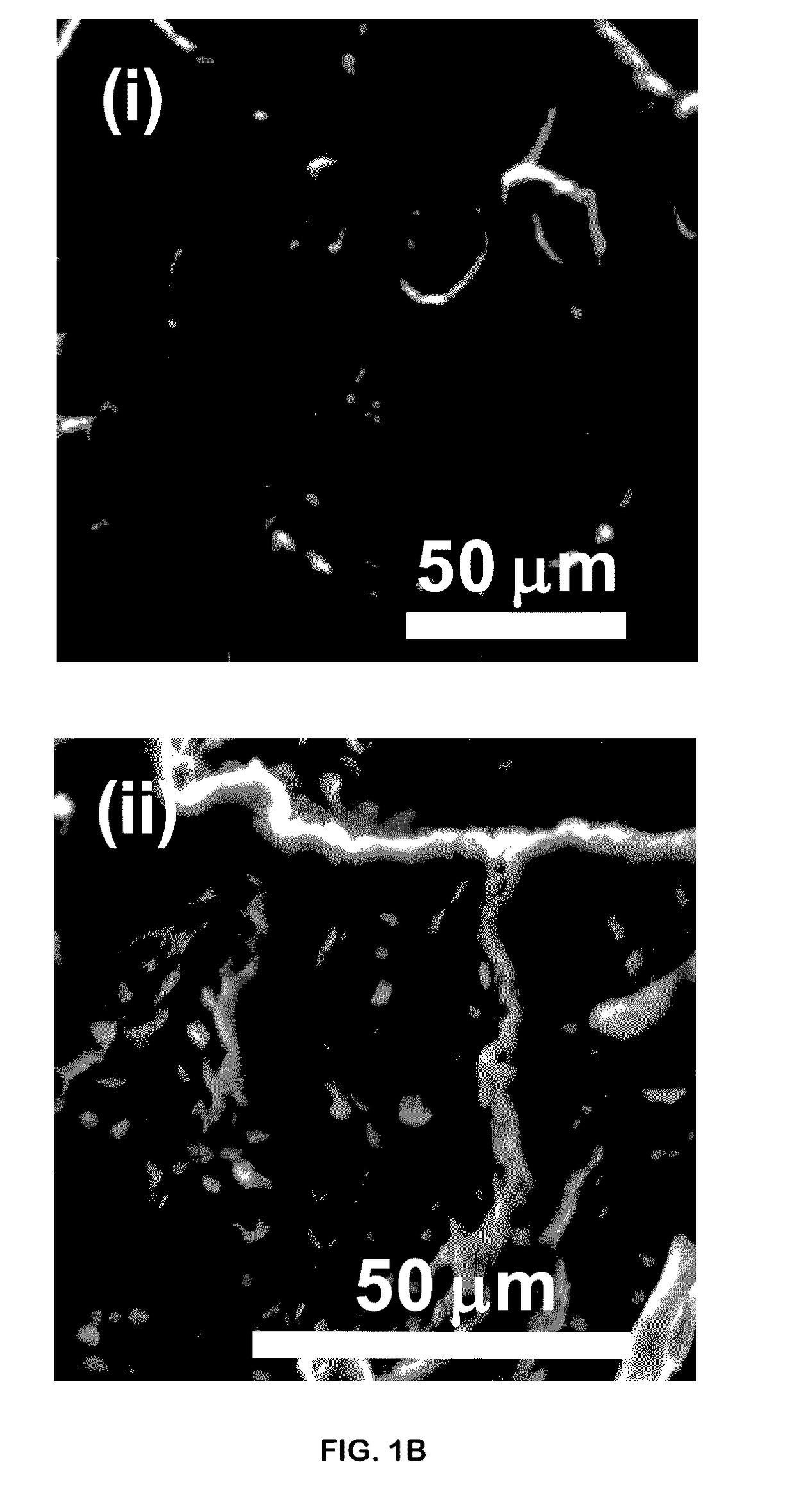Porous Polymer Scaffold Useful for Tissue Engineering in Stem Cell Transplantation
a porous polymer and stem cell technology, applied in the field of biodegradable porous polymer scaffolds, can solve the problems of limited tissue availability, morbidity and mortality, artificial skin embedded with epidermal/fibroblastic cells, etc., and achieve the effect of increasing the engraftment of male bmscs
- Summary
- Abstract
- Description
- Claims
- Application Information
AI Technical Summary
Benefits of technology
Problems solved by technology
Method used
Image
Examples
example 1
of Polymer Networks
[0103]Polyethyleneglycol-polyurethane networks when subjected to autoclaving (121° C. temperature and 15 psi pressure) did not exhibit any significant changes confirming high thermo- and barostablity (FIG. 1E). Often suitability of the polymer network depends upon its biodegradability and rate of release of implanted cells to interact with in vivo microenvironment. In pathological conditions, cellular damage including injury to lysosomal membranes results in leakage of their enzymes into the cytoplasm and activation of acid hydrolases that leads to acidic intracellular pH. Thus targeting acidic microenvironment of injured tissue often necessitates the delivery vehicles with pH-sensitive degradation in order to release cells at a controlled rate. (See, Stubbs, M et al., Mol. Med. 2000, 6, pp. 9-15). Interestingly, when the networks were subjected to buffers of different pH, they showed an increased degradation at acidic pH 5.8 (2.5-fold percent change in weight) as...
example 2
ability of Polymer Networks
[0104]Polymer degradation in presence of biocatalysts indicates the feasibility of use as cell delivery vehicles in transplantation therapies. Bio-catalytic degradation studies performed for 24 h, revealed 50% degradation in presence of collagen at 1 mg / mL and a relatively less degradation (13%) in presence of enzyme 0.25% trypsin (FIG. 2B). Polymer networks also showed 22.3% degradation over period of 24 h in presence of 20% TCA suggesting chemical hydrolysis by the reducing agent. The results imply that these polymer networks can efficaciously release cells making them a probable cell delivery vehicle.
example 3
ibility of Polymer Networks
[0105]The polymer networks when tested for their cytotoxic effect on cells such as MDA-MB-231, SK-HEP1 and mouse BMSCs depicted an insignificant difference on viability in presence or absence of polymer networks. Trypan blue dye exclusion assay performed to evaluate the stained dead cell population also revealed no significant difference between cells cultured with or without polymer networks (FIG. 2C). Furthermore, SRB Assay performed to evaluate the cytotoxicity imparted to the cultured cells showed an insignificant difference between results of cells cultured in absence or presence of polymer networks (FIG. 2D).
PUM
| Property | Measurement | Unit |
|---|---|---|
| Temperature | aaaaa | aaaaa |
| Fraction | aaaaa | aaaaa |
| Time | aaaaa | aaaaa |
Abstract
Description
Claims
Application Information
 Login to View More
Login to View More - R&D
- Intellectual Property
- Life Sciences
- Materials
- Tech Scout
- Unparalleled Data Quality
- Higher Quality Content
- 60% Fewer Hallucinations
Browse by: Latest US Patents, China's latest patents, Technical Efficacy Thesaurus, Application Domain, Technology Topic, Popular Technical Reports.
© 2025 PatSnap. All rights reserved.Legal|Privacy policy|Modern Slavery Act Transparency Statement|Sitemap|About US| Contact US: help@patsnap.com



